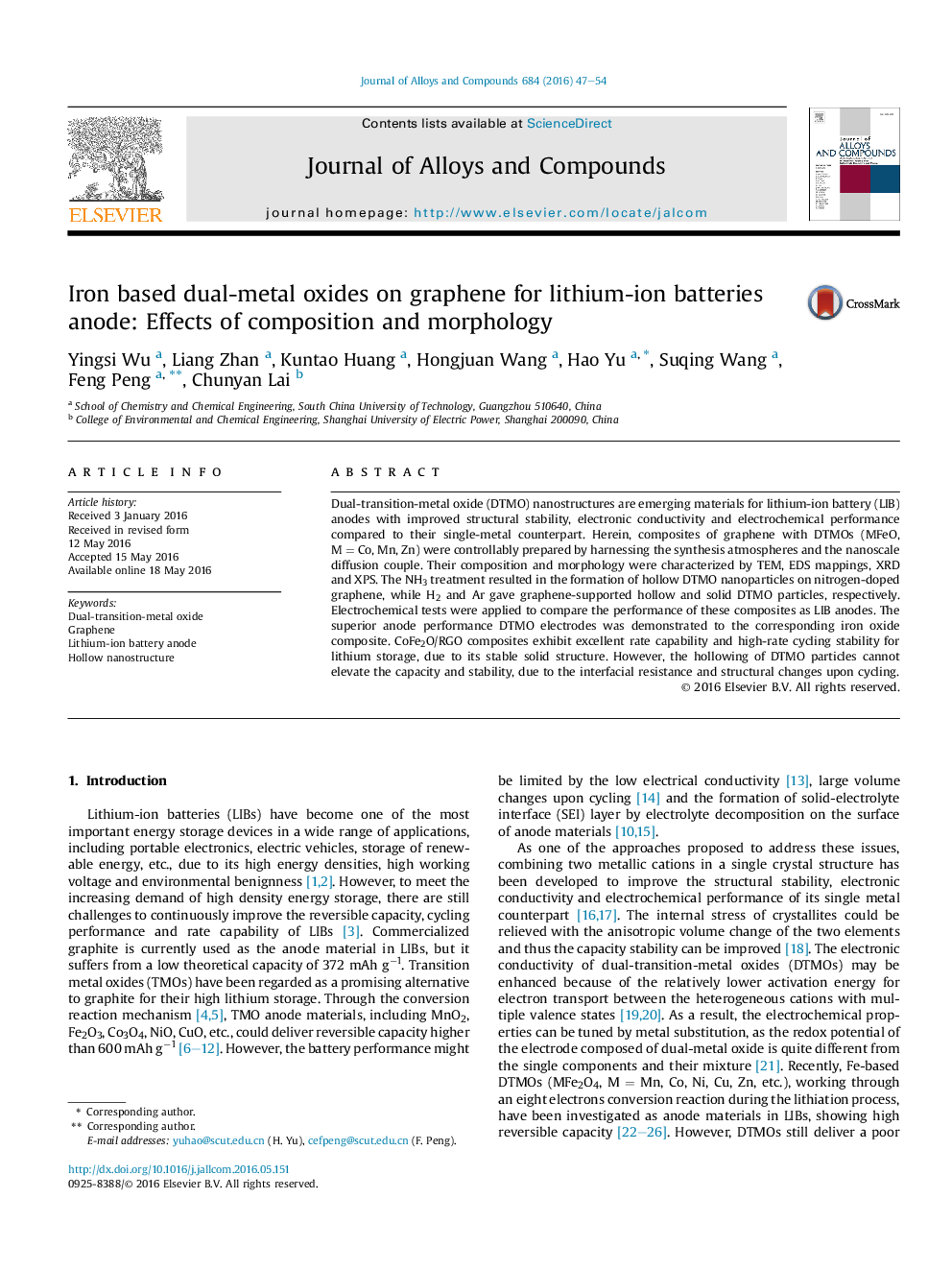| Article ID | Journal | Published Year | Pages | File Type |
|---|---|---|---|---|
| 1605215 | Journal of Alloys and Compounds | 2016 | 8 Pages |
Abstract
Dual-transition-metal oxide (DTMO) nanostructures are emerging materials for lithium-ion battery (LIB) anodes with improved structural stability, electronic conductivity and electrochemical performance compared to their single-metal counterpart. Herein, composites of graphene with DTMOs (MFeO, MÂ =Â Co, Mn, Zn) were controllably prepared by harnessing the synthesis atmospheres and the nanoscale diffusion couple. Their composition and morphology were characterized by TEM, EDS mappings, XRD and XPS. The NH3 treatment resulted in the formation of hollow DTMO nanoparticles on nitrogen-doped graphene, while H2 and Ar gave graphene-supported hollow and solid DTMO particles, respectively. Electrochemical tests were applied to compare the performance of these composites as LIB anodes. The superior anode performance DTMO electrodes was demonstrated to the corresponding iron oxide composite. CoFe2O/RGO composites exhibit excellent rate capability and high-rate cycling stability for lithium storage, due to its stable solid structure. However, the hollowing of DTMO particles cannot elevate the capacity and stability, due to the interfacial resistance and structural changes upon cycling.
Related Topics
Physical Sciences and Engineering
Materials Science
Metals and Alloys
Authors
Yingsi Wu, Liang Zhan, Kuntao Huang, Hongjuan Wang, Hao Yu, Suqing Wang, Feng Peng, Chunyan Lai,
